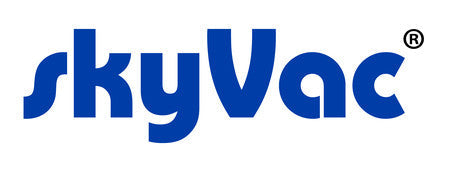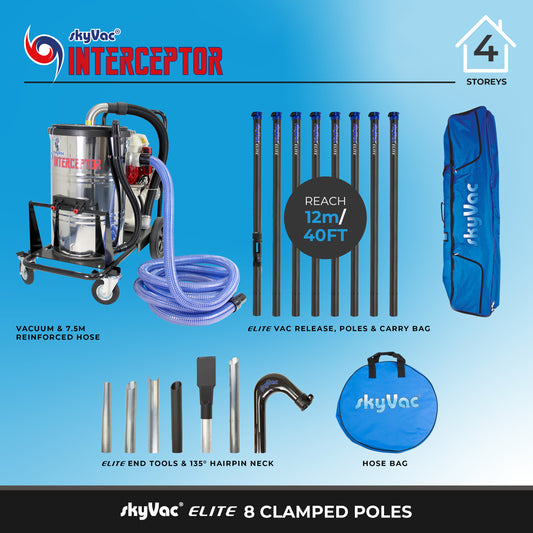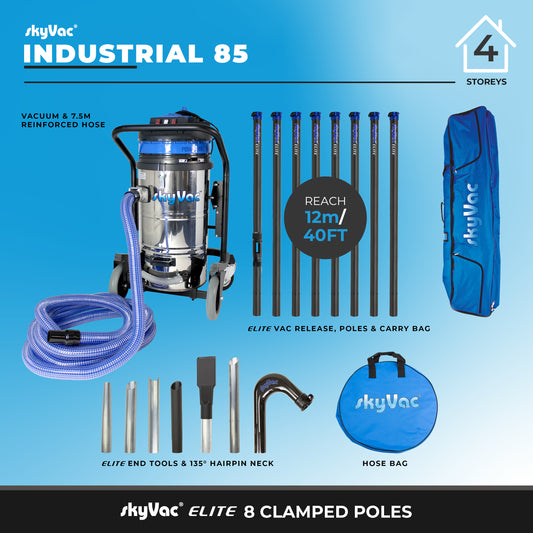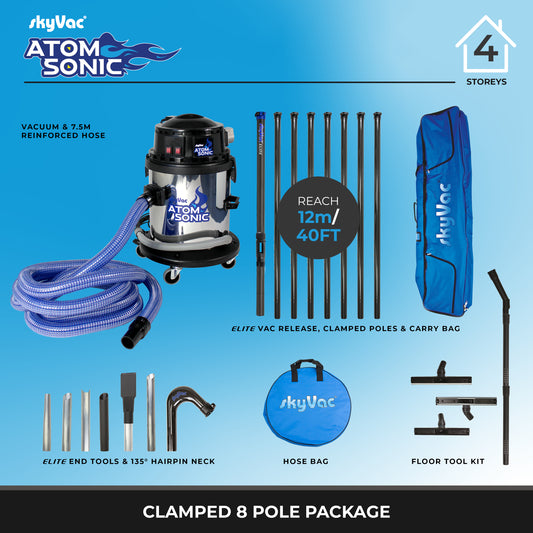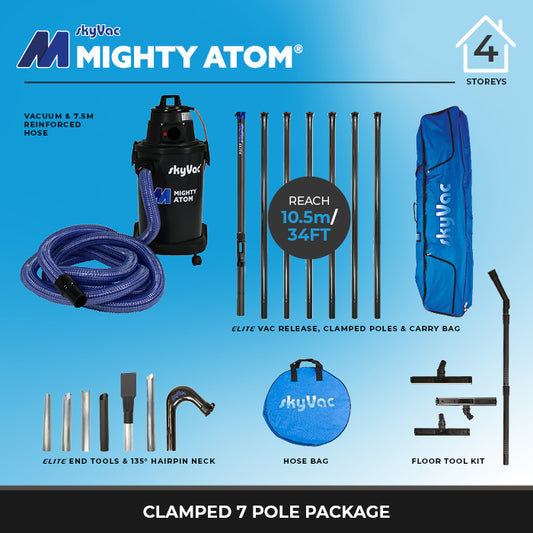Mastering High Dusting Pole Systems for a Pristine Home
Share
We all want our homes to be clean, right? But sometimes, the dust really likes to hang out in the highest spots. Think ceiling fans, tall bookshelves, or those tricky corners near the ceiling. It’s easy to forget about these places, but they can really make a difference in how clean your whole house feels. That’s where we found ourselves needing a better way to tackle those high-up dust bunnies. We started looking into different tools, and that’s how we discovered the world of High Dusting Pole Systems. These things are pretty neat and can actually make cleaning those hard-to-reach areas a lot easier than you might think.
Key Takeaways
- High dusting pole systems allow us to clean elevated areas safely and effectively from the ground, avoiding the need for ladders.
- Choosing the right pole material, length, and end tools (like brushes or microfiber heads) is important for different dusting tasks.
- Regular maintenance of our dusting poles and their attachments will help them last longer and work better.
Understanding High Dusting Pole Systems
When we talk about keeping our homes truly clean, we often focus on the surfaces we see every day. But what about those spots way up high? Dust, cobwebs, and all sorts of airborne particles have a way of finding their way to the highest points in our homes, like ceiling corners, light fixtures, and the tops of cabinets. These areas can become quite neglected, and over time, they can really impact the overall cleanliness and even the air quality in our living spaces.
This is where high dusting pole systems come into play. They're specifically designed to help us tackle these hard-to-reach places safely and effectively, all from ground level. No more precariously balancing on chairs or ladders! These systems are a game-changer for achieving a truly pristine home from top to bottom.
The Importance of Reaching New Heights in Cleanliness
Think about it: dust doesn't just stay on the floor. It floats around, carried by air currents from heating and cooling systems, or even just from us moving about. Because dust particles are so light, they naturally drift upwards and settle on anything they can. This means that the highest points in a room, like:
- Ceiling beams and rafters
- The tops of tall furniture or cabinets
- Light fixtures and ceiling fans
- Air vents and ductwork
...can become significant dust collectors. Not only does this look unsightly, but this accumulated dust can also harbor allergens, mold spores, and other irritants. When disturbed, these particles can become airborne again, affecting the air we breathe. Regular high dusting helps to remove this buildup, improving indoor air quality and creating a healthier environment for everyone.
Why Dust and Dander Accumulate in Elevated Spaces
So, why do these high spots get so dusty? It's a combination of physics and everyday life. Tiny particles that make up dust – think skin cells, fabric fibers, pollen, and even pet dander – are incredibly lightweight. When we move around, turn on fans, or use our HVAC systems, these particles get stirred up into the air. Warm air also naturally rises, carrying these particles with it.
As these particles travel upwards, they eventually lose momentum and settle on the nearest surfaces. In rooms with high ceilings or complex architectural features, this means that ledges, beams, the tops of shelves, and the upper parts of walls become prime real estate for dust accumulation. It’s a continuous cycle, and without the right tools, these areas are often missed during routine cleaning, leading to a gradual buildup over time.
Choosing the Right High Dusting Pole System
When it comes to keeping our homes truly clean, we often focus on the surfaces we see every day. But what about those high-up spots that gather dust and cobwebs? That's where high dusting pole systems come in. Choosing the right one can make a big difference in how effective and easy your cleaning routine is. We need to think about what we'll be cleaning and how high we need to reach.
Exploring Different Pole Materials and Designs
When we look at poles, we'll see they're generally made from either carbon fiber or aluminum. Carbon fiber poles are usually lighter, which is a big plus when you're extending them to their full height. This can really cut down on fatigue during longer cleaning sessions. Aluminum poles can be a bit heavier but are often more budget-friendly and still quite sturdy. You'll also find two main types of pole construction: telescopic and clamped.
- Telescopic poles are like adjustable extensions. You simply pull them out to the desired length and lock them in place with clamps. They're quick to adjust and great for varying heights.
- Clamped poles are made of interlocking sections that you connect together. These tend to be very rigid and stable, offering excellent control, especially for the longest reaches.
Selecting the Ideal End Tools for Your Needs
Once we have the right pole, we need to think about what's going on the end of it. The type of cleaning we're doing will determine the best tool.
- Brushes: For dry dusting, we'll want brushes. Some are designed to be static-dissipating to attract dust, while others have a specific shape, like a curved brush, to get into vents or around pipes.
- Microfiber Sleeves: These are great for surfaces that need a gentler touch. They can be slipped over brush heads or specific tools to capture dust effectively.
- Vacuum Attachments: For the most thorough dust removal, especially if we're concerned about allergens, vacuum attachments are the way to go. These connect directly to your vacuum system and often have brushes to help agitate dust while it's being sucked up.
- Angle Adaptors: These are lifesavers for getting into those awkward, hard-to-reach spots like the tops of light fixtures or behind pipes. They allow you to change the angle of your brush or vacuum head.
Ultimately, the best system for us will be lightweight, easy to assemble, and come with the right attachments for the specific high-up areas we need to clean.
Mastering the Art of High Dusting
Now that we understand the importance of reaching those high places and have a good grasp on the types of systems available, it's time to talk about how we actually do the high dusting. It’s not just about extending a pole; it’s about technique and care to get the best results and keep our equipment in good shape.
Effective Techniques for Dust and Debris Removal
When we're tackling those dusty ceiling beams, light fixtures, or ductwork, a methodical approach makes all the difference. We want to work from the top down, naturally, so dust doesn't fall onto areas we've already cleaned. Using the right attachment for the job is key. For instance, a soft, anti-static brush is great for general dusting on surfaces like beams or pipes, while a more specialized brush might be needed for intricate light fixtures. If we're using a vacuum system, like the SkyVac units, we want to ensure we have good suction and move the pole steadily to capture the dust effectively.
- Start High, Work Low: Always begin with the highest surfaces and work your way down to avoid re-contaminating cleaned areas.
- Gentle but Firm: Apply enough pressure to dislodge dust, but not so much that you risk damaging the surface or the equipment.
- Systematic Coverage: Work in sections, overlapping your passes slightly to ensure no spots are missed.
- Vacuum Assist: When using a vacuum system, keep the airflow consistent and move the tool deliberately across the surface.
It's easy to get caught up in just getting the job done, but taking a moment to adjust your grip, ensure the pole is locked at the right height, and that your attachment is secure can prevent a lot of hassle and improve the quality of your work. Think of it as a dance between you, the pole, and the dust.
Maintaining Your High Dusting Pole Systems for Longevity
To keep our high dusting pole systems working effectively for years to come, a little bit of maintenance goes a long way. After each use, we should give our poles and attachments a quick clean. This means wiping down the poles, especially the telescopic or clamped sections, to remove any dust or grime that could impede their function. Brushes should be cleaned or replaced as needed, and any microfiber sleeves should be washed according to their care instructions. Storing the poles properly, ideally in a dry place and protected from damage, is also important. Regular checks of the connections and clamps will help us catch any potential issues before they become bigger problems. For those using vacuum systems, remember to check and clean the filters as recommended by the manufacturer to maintain optimal suction power. Keeping up with this basic care ensures our tools are always ready for the next job and perform at their best. You can find a great range of SkyVac accessories to help with this maintenance.
Want to get those high-up places clean? Our "Mastering the Art of High Dusting" guide shows you how. Learn simple tricks to reach and clean dusty spots safely and easily. Ready to make your space sparkle from top to bottom? Visit our website today to discover the best tools and tips for tackling high dusting jobs!
Wrapping Up Your High Dusting Journey
So, we've gone over why high dusting is important and how the right tools, like those from SkyVac and Clean Direct, can make a huge difference. Using these pole systems means we can tackle those dusty corners and high-up spots safely and efficiently, all from the ground. It really does make keeping our spaces clean so much easier. Give it a try, and you'll see how much cleaner your home or workspace can feel.
Frequently Asked Questions
How high can these poles actually reach?
We can reach up to 40 feet high with these poles, which is super tall! This means we can clean almost any ceiling or high spot without using a ladder or anything wobbly.
What kinds of things can we clean with these pole systems?
These tools are great for all sorts of places! We use them for cleaning dusty ceiling beams, vents, light fixtures, pipes, and even the tops of walls or tall shelves. Basically, anywhere dust likes to hide up high.
Can we hook these poles up to our own vacuum cleaner?
Yes, absolutely! We can connect most of our vacuum heads to the poles. If your vacuum isn't a perfect match, we often have adapters to make sure it works smoothly. This helps us capture dust right as we clean.
